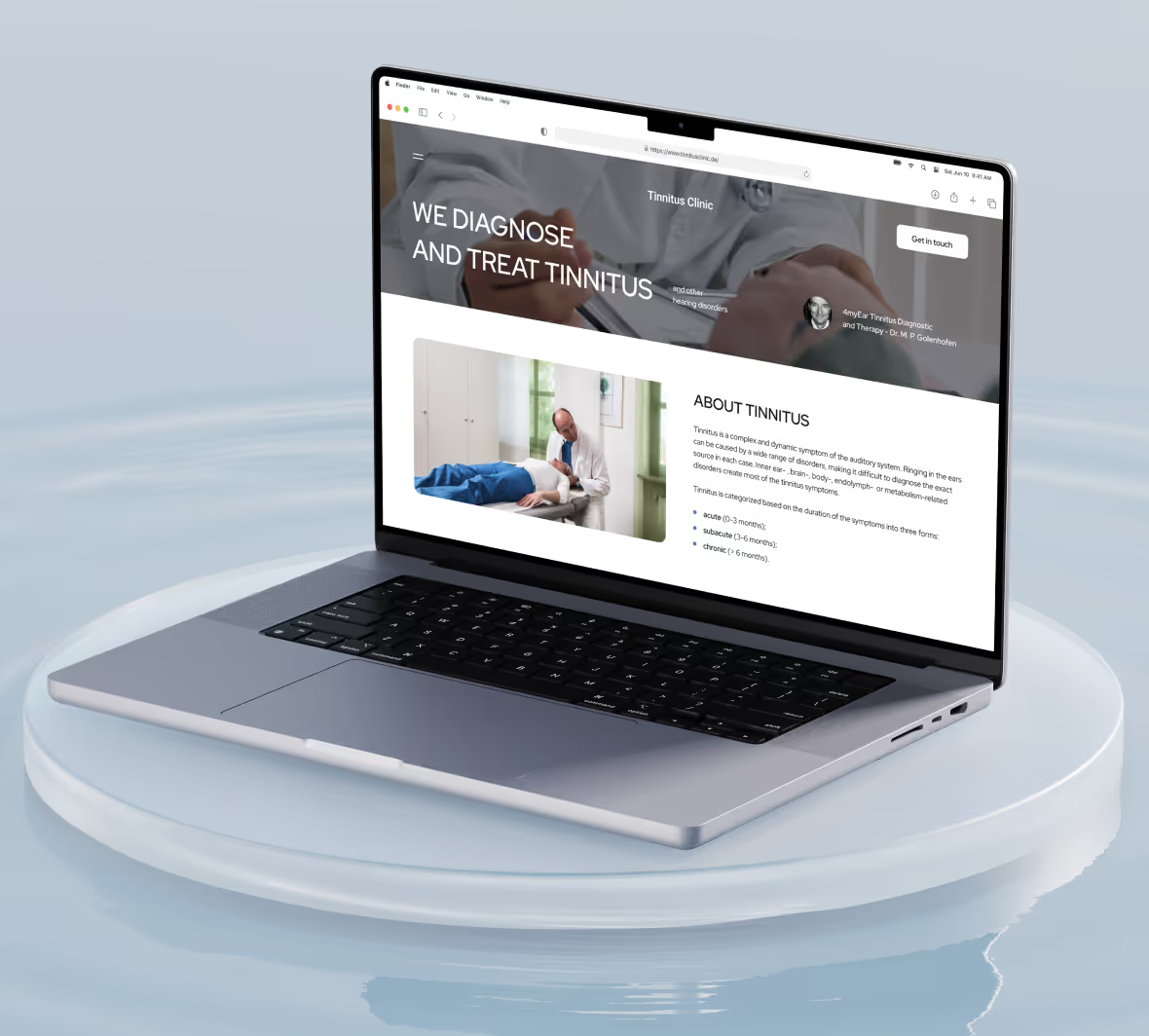
Consider you have a brilliant startup idea. You envision a product that will be a hit and solve your target market's most significant pain point. But before you get ahead, you must determine if the product you want to build has market demand. It’s easy to get excited and want to jump right into creating your product, but if you don’t take the time to understand how to gauge market demand, you might end up creating something that nobody wants. Conducting proper research and figuring out how to determine market demand for your startup idea will help you avoid costly mistakes and set you up for success. This guide will help you determine market demand for your startup idea.
Building a no-code MVP is an excellent way to reduce risk and test your startup idea before launching into full-scale production. And the Minimum Code can help you get there quickly and achieve your goals.
What is Market Demand?
Market demand is the overall desire for a particular product or service within a target market. For startups, it is a crucial step in determining if there’s an audience willing to buy their product before investing significant time and resources. Market demand helps startups answer critical questions like: “Do people need this?” and “How likely are they to purchase it?” It guides product development, marketing, pricing, and customer acquisition decisions.
According to CB Insights, 35% of startups fail due to a lack of market need for their product. This emphasizes the importance of understanding market demand early to prevent costly missteps. A study by Harvard Business Review shows that companies prioritizing customer needs have 60% higher profitability. This underscores that aligning products with people's wants boosts a startup's chances of long-term success.
Why Market Demand Matters for Startups
Avoid Costly Mistakes
Startups can avoid the risk of creating products with limited or no interest by validating demand before launching. Understanding market demand reduces the likelihood of a “product-market misfit,” where a product fails to meet customer needs.
Resource Allocation
With knowledge of demand, startups can focus resources on features and marketing strategies that address customer pain points. This enables founders to use their limited resources more efficiently and effectively.
Investor Appeal
Investors are more likely to fund startups demonstrating apparent demand, as this proves there’s a path to revenue and growth. Showing market demand can make a startup more attractive in funding rounds. According to a survey by Startup Genome, businesses that validate market demand are up to 36% more likely to secure venture capital. This shows that investors prioritize market needs when evaluating startup potential.

How to Start Gauging Market Demand
Use Market Research Tools
Platforms like Google Trends, Statista, and Nielsen are valuable for tracking demand across regions and periods. Google Trends, for example, reveals if search interest in your product’s category is growing, stable, or declining.
Engage Directly with Potential Users
Conducting surveys, interviews, or focus groups can help uncover customers' specific problems and whether they’re looking for a solution. Social media polls and feedback from relevant online communities can also provide quick insights.
Industry Reports and Publications
Market reports from sources like McKinsey, Deloitte, and Statista offer data on industry size, projected growth rates, and consumer behavior trends, helping to refine target audiences and pricing strategies.
Related Reading
• MVP Features
• Develop MVP
• MVP Development Cost
• How to Build an MVP
• MVP Development Process
• MVP Benefits
• MVP Development for Startups
Smart Ways to Research and Get Ready for Launch
Define Your Ideal Customer
Identifying your ideal customer profile is essential before launching your product. Define your Ideal Customer Profile based on demographics, behaviors, pain points, and goals. Knowing who you’re building for ensures that your research and marketing efforts are accurately targeted and relevant. Next, use social listening tools, like Hootsuite Insights or Sprout Social, to monitor conversations and trends related to your industry. Social listening reveals what your target audience cares about, their current frustrations, and even which solutions they might already be considering.
Nielsen reports that 92% of consumers trust recommendations from friends and family over ads, highlighting the need to understand customer conversations and word-of-mouth trends. Marketing expert Neil Patel recommends building “customer personas” based on this research. Personas represent your ideal customer and guide every marketing and product decision you make, from messaging to product design.
Competitor Analysis
Now that you have an ideal customer profile, it’s time to understand the competitive landscape. Conduct a competitive analysis to understand what similar businesses are doing well and where gaps exist. Use tools like SEMrush or Ahrefs to examine competitors’ SEO strategies, top-performing content, and customer engagement. This insight can reveal opportunities for differentiation and identify successful tactics. Next, look for gaps in the market—areas where competitors aren’t fully addressing customer needs or where demand is underserved.
These gaps present opportunities for your startup to stand out by meeting unaddressed needs. HubSpot reports that 47% of buyers engage with 3-5 pieces of content before talking to a salesperson, showing the importance of understanding competitors’ content to enhance your strategy. Business strategist Michael Porter suggests using competitor analysis to create a unique competitive advantage. By understanding competitors’ weaknesses, you can highlight your strengths and position your product as a superior solution.
Stay on Top of Market Trends
Tracking emerging industry trends helps you refine your product to align with what customers want when you launch. Use tools like Google Trends to monitor interest in critical topics or keywords related to your product. Industry reports from Statista, McKinsey, or Deloitte provide valuable insights into consumer behaviors, preferences, and industry growth. Next, identify seasonal patterns in demand. Knowing when your product will be most relevant lets you plan launches or promotions around peak times. This knowledge is instrumental in retail, travel, or fitness industries, where demand fluctuates with seasons or events.
Research from Statista shows that industries with seasonal demand, like health and wellness, experience up to 15% higher growth when leveraging trend data. Marketing guru Seth Godin advises businesses to "find a trend and ride it," which means aligning your product with growing trends for faster traction. Trends like sustainability, wellness, and convenience continue to show strong demand across industries.
Pre-Launch Audience Engagement
Before you launch, engage potential users to gather early feedback and build anticipation for your product. You can do this through surveys, beta testing, or teaser content. Early feedback can validate your concept, reveal new insights about customer needs, and build an initial audience excited about your launch. Next, set up a landing page with a clear value proposition where interested users can sign up for early access or updates.
Waitlists help gauge initial interest and create a sense of exclusivity. Neil Patel suggests A/B testing landing pages to see what resonates with your audience before launching fully. This approach validates your messaging and helps attract a more engaged audience.

How to Make Your Startup Stand Out
Define a Unique Value Proposition (UVP)
Your Unique Value Proposition (UVP) is your startup’s “secret sauce” – the defining factor that sets you apart from competitors. It's your first impression, telling your audience why they should choose you over others.
Identify Your Core Strengths
According to a survey by CB Insights, 19% of startups fail due to a lack of competitive differentiation. To avoid this, list specific strengths, like faster delivery, eco-friendly materials, or a unique user experience.
Address a Specific Problem
Research shows that 42% of startups fail because they misread market needs. To prevent this, clarify the primary pain point you solve for your customers. An effective UVP will resonate because it directly tackles customer concerns.
Promise Clear Benefits
Explain what users gain by choosing you. If it's “fast service,” be specific: “get results in 24 hours, guaranteed.” This is key to building trust.
Be Specific and Concise
Avoid jargon. Many Redditors on r/startups emphasize using simple, direct language so customers instantly understand your value. A user commented, "People don’t have time to decode what you do. Be clear and save your pitch for later."
Focus on a Niche
Establishing a niche allows you to specialize, which is often more effective than trying to appeal to everyone. Here’s how:
Start Small, Then Scale
Focusing on a niche market reduces competition and allows you to build a loyal customer base before expanding. For example, Dollar Shave Club targeted men who wanted affordable razors with convenient home delivery—a simple niche that grew into a billion-dollar brand.
Understand Your Niche Deeply
Reddit users often stress the importance of "immersing yourself in the market." One user explained, "Instead of ‘women’s fitness,’ try ‘strength training for postpartum women.’" A niche this specific can create a loyal audience willing to pay a premium for tailored solutions.
Highlight Exclusivity
Being niche often means you’re offering something others can’t. Statistics show that 80% of consumers prefer brands that provide personalized experiences, so appeal to this by emphasizing the exclusivity of your product or service.
Build a Relatable Brand Story
A relatable brand story makes your startup memorable and trustworthy, helping people connect with your vision on a personal level.
Show Your ‘Why’
Consumers today, especially Millennials and Gen Z, gravitate toward brands with a purpose. Nielsen data shows that 73% of consumers are willing to spend more on a product if it comes from a sustainable or purpose-driven brand. Explain why you started your company and how it contributes to positive change.
Be Authentic
Redditors often warn against "forced authenticity." A user on r/Entrepreneur shared, "Consumers can smell fake stories from a mile away. Just be genuine – it resonates more." Share both challenges and successes, as transparency builds trust.
Use Emotional Appeal
People remember how you make them feel. Make sure your story evokes emotions – whether it’s empathy, excitement, or hope. Craft your brand story around an emotion that aligns with your values and the experience you want to deliver to customers.
Leverage User-Generated Content (UGC)
User-generated content can add social proof to your startup. Encouraging happy customers to share their experiences enhances credibility and widens your reach.
Encourage Customer Reviews and Testimonials
BrightLocal says 93% of consumers read reviews before purchasing, making UGC crucial for your brand’s reputation.
Collaborate with Micro-Influencers
Collaborating with influencers in your niche can be more impactful than broad campaigns. A Reddit user on r/Marketing explained, "Micro-influencers have a more engaged audience, and their recommendations feel more genuine." This can help you attract customers who trust their opinions.
Create a Community
Fostering a community where customers can share ideas and feedback can create a loyal customer base. Reddit threads themselves, like those on r/smallbusiness, often become support networks for startups, with users sharing that a strong community usually leads to organic growth and word-of-mouth referrals.
Invest in Exceptional Customer Service
Superior customer service is a significant differentiator, especially in today’s competitive landscape, where 77% of consumers report poor customer experiences impacting their brand loyalty.
Make Customer Service a Priority
Aim for a response time under 24 hours. According to HubSpot, 90% of customers rate an "immediate" response as necessary when they have a question, with 60% defining "immediate" as 10 minutes or less.
Offer Personalized Support
Consider live chat, AI assistants, or dedicated customer success managers for a more tailored approach. Redditors on r/CustomerService frequently note how personal touches in customer service build loyalty and lead to recommendations.
Learn from Feedback
Consistently review feedback to improve your product and service. A Reddit user shared, "Customer feedback is gold – it can make or break you." This insight aligns with Zendesk data, which shows that companies prioritizing customer feedback outperform their competitors by 25%.

Use Data-Driven Marketing Strategies
A data-driven marketing approach helps you make informed decisions and optimize campaigns based on real insights.
Invest in Analytics
Use tools like Google Analytics, social media insights, and customer surveys to understand where you’re performing well and where you can improve.
Segment Your Audience
Segmenting allows you to deliver the right message to the right people.
Iterate and Adapt
Reddit users frequently discuss the importance of A/B testing. One user noted, "A/B testing saved us from a failed campaign – without data, you’re just guessing." Testing allows you to fine-tune your strategies based on actual performance, giving you a clear edge over competitors.
How Minimum Code Can Make Your Startup Stand Out
Minimum Code, a no-code development agency, offers a rapid, cost-effective solution for startups looking to enter a competitive market quickly. With tools like Bubble.io, Xano, and Webflow, we help non-technical entrepreneurs launch B2B SaaS or web apps fast, ensuring you can focus on building a differentiated brand without traditional tech hurdles.
How to Validate Your Start-Up Ideas
Why Start with an MVP
An MVP includes only the core features necessary to solve the main problem for your target audience. Launching with an MVP allows you to test your concept with real users at a lower cost and gather insights that guide further development. MVPs enable startups to make data-driven decisions, iterate quickly, and reduce the risk of over-investing in features that may not resonate with users. Research shows that startups using the Lean Startup methodology (which emphasizes MVPs) reduce time to market by up to 50%, allowing them to iterate faster and reach customers sooner. Eric Ries, author of The Lean Startup, suggests building an MVP to test hypotheses about your business model. By validating assumptions early, startups can pivot based on real-world feedback instead of costly trial and error.
Beta Testing and Feedback
Beta testing involves releasing your product to a limited group of users to gather feedback on usability, functionality, and overall user experience. This feedback provides insights that help refine your product before the full launch. Engage beta testers by offering early access or exclusive benefits, creating a sense of involvement and loyalty among these early users. Use surveys, direct conversations, and in-app feedback tools to collect beta testers’ thoughts.
Focus on both the positives and areas of improvement to ensure a comprehensive understanding of user needs. Product manager and startup advisor Marty Cagan recommends that teams focus on finding “high-quality feedback” from beta testers. He suggests identifying pain points and opportunities for improvement based on direct user experiences rather than hypothetical scenarios.
Run a Pre-Launch Campaign to Build Buzz
A pre-launch campaign helps build anticipation for your product and gauge initial interest. You can create a landing page with a clear value proposition, encouraging visitors to sign up for updates or join a waitlist. Use social media, email marketing, and partnerships to drive traffic to your pre-launch page and create a community of potential customers excited about your product. Platforms like Launchrock and Leadpages make it easy to set up landing pages. Use countdown timers, sneak peeks, and teasers to build excitement and engage your audience.
Companies that use pre-launch email lists report 40% higher open rates post-launch, indicating that pre-launch efforts create anticipation and a loyal audience ready to engage from day one. Marketing strategist Rand Fishkin suggests using pre-launch campaigns as an “audience-building phase” to test messaging, refine target demographics, and gather leads. He emphasizes adjusting your campaign based on early sign-up behavior to ensure you’re attracting the right audience.
Using Data to Refine Your Strategy
Once your MVP or beta is live, track engagement, feature usage, and overall satisfaction. Use analytics tools to see which parts of the product users interact with most and which areas might need improvement. Metrics like retention rate, churn, and feature adoption provide a quantitative view of user satisfaction and are essential for validating product-market fit. After analyzing the data, make necessary improvements or adjustments to align with user expectations. Iterating based on real-world feedback helps ensure your product meets the needs of your target audience before a full-scale launch.
According to Lean Startup principles, continuously measuring and learning from user data is critical to creating a product that fits the market. Eric Ries recommends setting up a “Build-Measure-Learn” feedback loop to streamline this process and allow startups to improve continually.
Bring your long-held business ideas to life with us. Get a free product discovery & scoping for your app idea today!
Get a Free Product Discovery & Scoping for Your App Idea Today
Time is money, especially for startups. The longer your project takes to complete, the more development costs you pay, and the greater the risk that your app will flop before it even launches. Minimum Code allows you to build your MVP in weeks instead of months or years. We aim to deliver your product within 30 days. Our rapid development speed helps you get your app to market quickly so you can validate your business idea and start turning a profit.
Related Reading
• No Code Agencies
• Creating an MVP
• MVP Development Team
• MVP Validation
• Launching an MVP
• MVP Tools
• Lean Startup MVP

Ready to build your product?







